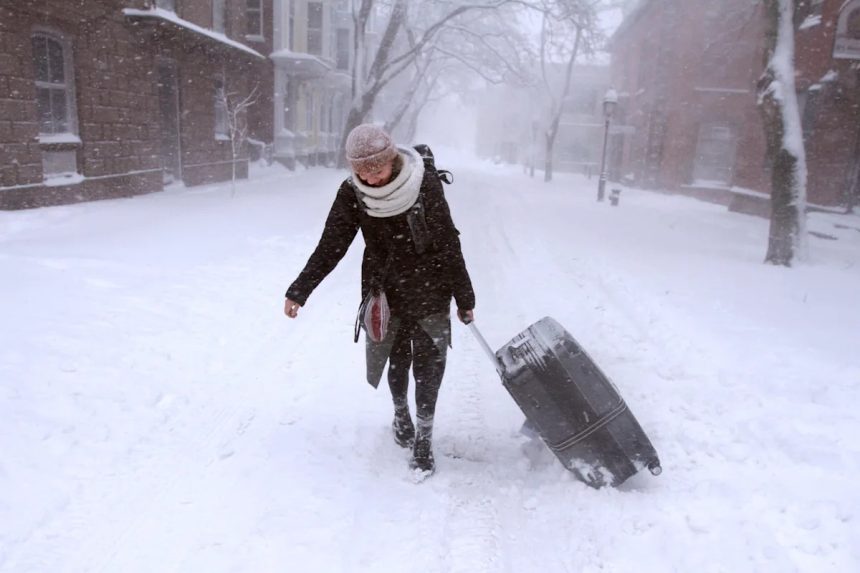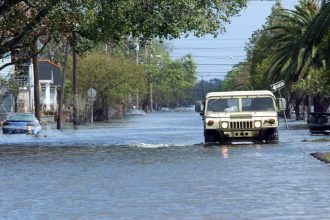This winter, Rhode Island could see more snow, but total accumulation “may still fall below the historical average” as storms during mid- to late winter may produce a mix of rain and snow, rather than just snow, according to AccuWeather.
“The AccuWeather 2025-2026 U.S. Winter Forecast predicts a ‘bookend’ winter for the central and eastern U.S., with the biggest storms expected around the opening and the final weeks of the season,” a release from AccuWeather stated.
The report added that early-season storms will likely track from Canada into the Midwest “before pushing toward the mid-Atlantic and New England. Some storms could strengthen into nor’easters.”
In late winter, the Northeast may start seeing more intense storms, according to AccuWeather.
Here’s more about AccuWeather’s extended winter forecast.
Will Rhode Island have a bad winter?
The AccuWeather forecast doesn’t look specifically at Rhode Island, instead lumping it in as part of Northeast region.
In a written statement, AccuWeather long-range meteorologist Paul Pastelok stated, “It looks to be an intense and stormy winter for certain areas of the country, particularly across the Midwest, Great Lakes, Ohio Valley, Northeast and parts of the mid-Atlantic.”
This winter, AccuWeather is predicting:
-
Snowfall is projected to be higher than last winter in parts of the Northeast, including Philadelphia, New York City and Boston
-
A snowy winter is predicted across portions of the Midwest, a swath from the Plains to the Ohio Valley, and areas of Washington, Oregon, Idaho and Montana
-
December could be especially active around the Great Lakes, where blasts of cold air will fuel heavy lake-effect snow
-
Buffalo, New York, is forecast to receive 90 to 100 inches of snow, close to its historical average. More than 77 inches of snow was measured in Buffalo last winter.
What is the Farmers’ Almanac forecast for this winter in New England?
A graphic on the almanac’s website indicates that New England will be “cold [and] snow-filled” this winter.
“The season’s coldest temperatures will be found from the Northern Plains to New England,” the forecast said.
And that means snow and chilly temperatures.
The forecast predicts a “significant cold snap in mid-January” and another “cold spell” in mid-February.
Barbara Stutz, an exchange student from Switzerland attending the Rhode Island School of Design, trudges through the snow on Benefit Street after arriving back in Providence during a winter storm in February 2017.
For those who love snow, it might start on the early side this year, with the almanac saying northernmost parts of New England could see some snow before winter begins on Dec. 21, 2025.
“Frequent snowstorms in New England should keep snow lovers happy. Areas up and down the Atlantic Coast will see significant rain, mixing with snow from time to time,” the prediction said.
The forecast added that in mid-January, people can expect “some pretty good snowstorms in Pennsylvania and New Jersey and southern New York … [and] then again in February, between the 8th and the 11th, we’re calling for some very cold conditions, with some heavy snow in northern New England.”
What is the Old Farmer’s Almanac’s extended winter forecast?
The Old Farmer’s Almanac predicts the opposite of the Farmers’ Almanac.
According to a graphic on the Old Farmer’s Almanac website, Rhode Island and the rest of New England can expect a “mild, dry” winter.
What’s the NOAA extended winter forecast?
According to a graphic from the National Oceanic and Atmospheric Administration, from December to February 2025, New England has “equal chances” of having a winter with above-average precipitation or below-average precipitation.
When does winter begin and end?
Winter starts on Dec. 21, 2025. It ends March 20, 2026.
This article originally appeared on The Patriot Ledger: RI winter weather forecast: Forecasters can’t agree on winter ahead









